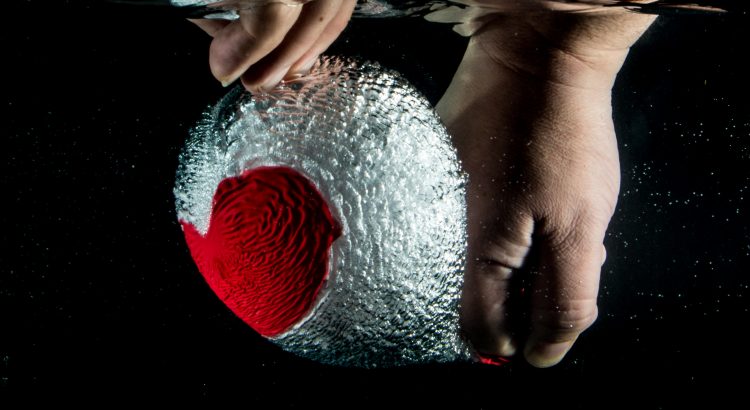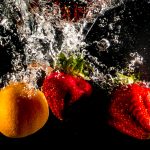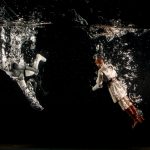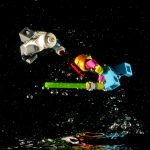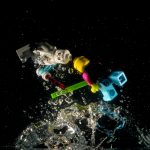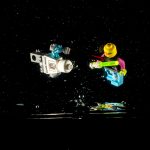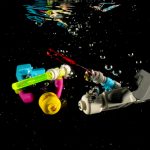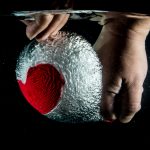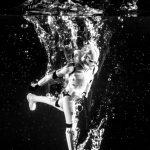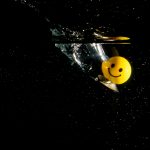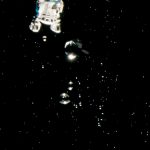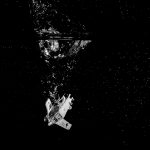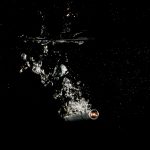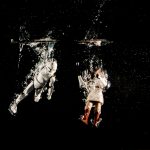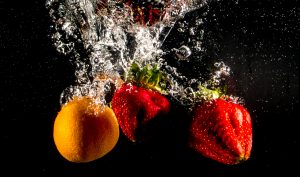 At a recent meeting of a camera club, to which I belong, we thought we would have fun with a fish tank of water, two flashguns (speed-lights), a black backdrop and some small objects to drop into the water.
At a recent meeting of a camera club, to which I belong, we thought we would have fun with a fish tank of water, two flashguns (speed-lights), a black backdrop and some small objects to drop into the water.
Needless to say it was great fun and another one of those photographic exercises that generates the excitement of the anticipation of what you’re going to get.
We’ve all seen these types of photographs, which can look very impressive, but look beyond the reach of the amateur. Not so! It’s surprisingly easy. However – the caveat is, you have to take loads of shots, and there’s an element of ‘lucky timing’ required.
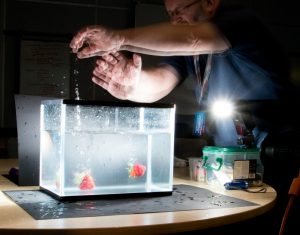 The setup is simple, but will require at least 2 flash guns and a remote flash trigger to trigger both simultaneously. You could do it with 1 flashgun, but it will be harder to illuminate more than one angle.
The setup is simple, but will require at least 2 flash guns and a remote flash trigger to trigger both simultaneously. You could do it with 1 flashgun, but it will be harder to illuminate more than one angle.
Next you need a tank of water with some black card or cloth behind it.
The room needs to be in near total darkness when you take the shots, then you use your flash guns to light the objects as they fall in the water.
Get your camera on a tripod, then focus it at the distance at which your objects will fall into the tank. Get an assistant to hold an item in the tank, then focus manually. Set the camera to F11 ‘ish’ and your lowest ISO. Yep – You’re going to use ‘M’ manual mode.
The key to what freezes the shot is not your shutter speed, it’s the duration of the flash! Set you flash output (in manual mode) to 1/32 or 1/64.
You can try to capture the shot buy using fancy infra-red beam, that triggers the flash as the object passes through it, whilst your camera is on a very long exposure.
OR, as we did, set a shutter speed to 125th and set shutter to continuous shooting. The fact your flash is set to a low power output, means it should keep up with the burst firing of your camera. Again, remember, it’s the flash that freezes the action, not your shutter.
Get your assistant to hold the object above the water, then countdown out loud 3,2,1…GO. Hold down your shutter button from GO. Then enjoy the excitement of seeing what you’ve caught.
We experimented with dropping fruit, miniature Star Wars figures, Lego figures and finally bursting a balloon under water.
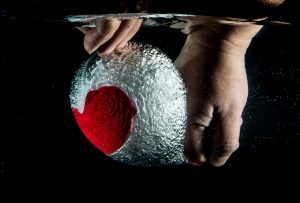
The shot and, coincidentally the last shot, of the day was this, the balloon pop. The timing was such, that we could still see the shape of the balloon as air bubbles, before they started to race to the top of the water.
There is some post processing to be done to get what you see here, but nothing complicated. You are likely to see light reflects around the tank, such that you can see reflections on the walls of the tank. The solution is to reduce highlights, darken shadows and blacks, in Lightroom/ Photoshop or your favourite editing program, to make the background as dark as possible.
I use Lightroom, and found darkening blacks, shadows and upping clarity did the trick – with cropping too to remove your assistants arms!
So give it a try – it’s fun. Enjoy photography!
Here’s a gallery of the other shots.
